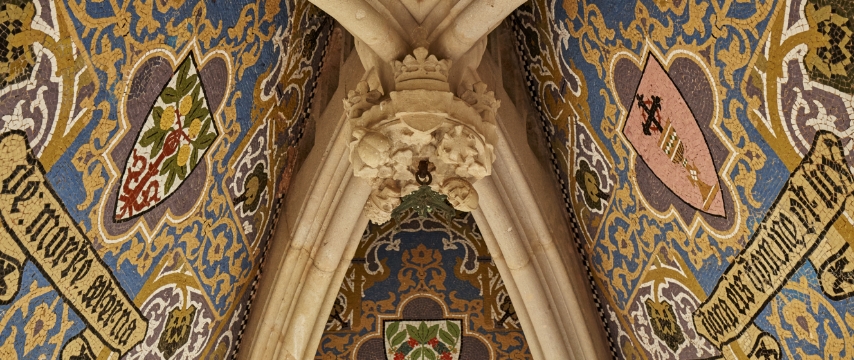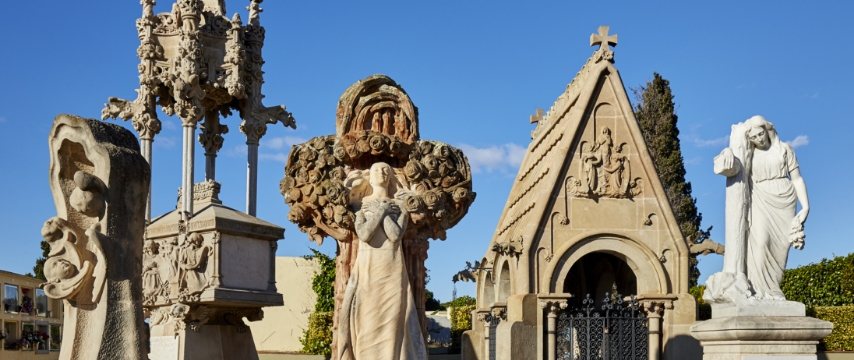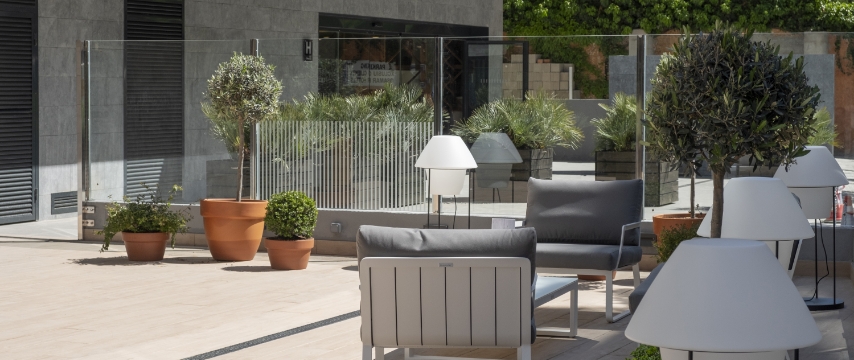

The modernist cemetery of Lloret de Mar is a clear example of the importance that funerary art had during the 19th century in Catalonia. Built in 1892 by the architect Joaquim Artau i Fàbregas thanks to the patronage of the town's Indians, it has authentic jewels of modernist art with countless details associated with funeral symbols.
The day when the cemetery receives the most visits is November 1, during the festival of All Saints, although it is also visited during the rest of the year by tourists and art history enthusiasts from all over the world, who want to marvel at its spectacular sculptures.

The Lloret de Mar cemetery is located away from the nerve center of urban life, on Vila de Blanes Avenue, 1. It was built in 1892 by the architect Joaquín Artau i Fàbregas and later renovated by the wealthy Indian families of Lloret, among the years 1896 and 1901.
Between 1800 and 1840 there was a boom in Lloretians who embarked to the Americas where they achieved great wealth; With the fortunes they made in the new world, they built their mansions in the town of Lloret de Mar and made important donations that left their mark, such as the Jacint Verdaguer promenade or the Church of Sant Romà.
The economic power of the Indanos of Lloret was so great that they ordered important architects of the time such as Josep Puig i Cadafalch, Antoni Maria Gallissà Soqué, Vicenç Artigas and Bonaventura Conill Montobbio to design their pantheons and hypogeums (earth graves with sculptural decoration on top).
Some of the most notable works of the cemetery are the pantheons of Costa-Macià, Casanovas-Terrats, Esqueu-Villalonga and Cabañas, and the hypogeums of Camps i Nonell, Durall i Surís, Durall i Carreras i Vilallonga.
The cemetery follows the urban planning trends of the large cities of the 19th century, with avenues, walks, small squares and blocks of houses. The space is organized following guidelines of social hierarchy; On the main avenue we find the tombs of private clients and to the right and left of the main avenue are the second and third category hypogeums.

Currently, this cemetery is one of the main tourist attractions in Lloret de Mar. It has been declared an Asset of Cultural Interest and is part of the European Cemeteries Route, which includes the most unique cemeteries in Europe.
It is a quiet place, without large crowds, ideal for walking while observing the beauty of its different artistic constructions, recently signposted with multilingual explanatory panels.
The cemetery is part of the Indian route of Lloret de Mar, a pleasant tour of the town that we recommend to all lovers of art and history. The modernist cemetery of Lloret de Mar can be visited every day from 8 a.m. to 6 p.m. from November to March and from 8 a.m. to 8 p.m. from April to October.
In Lloret de Mar it is impossible to get bored, a beach destination in Spain that offers activities for all tastes: sport, culture, gastronomy, activities for children, nightlife... The perfect place to disconnect from the routine and enjoy a unique and relaxing break.
Book your stay on the Costa Brava now for the 2024 season with Rosamar Hotels. Save money on your next vacation and live unique experiences with your loved ones!

Lloret de Mar’s city council has organized a cycle of gastronomic experiences with showcooking, wine tasting and a daiquiri and tapas workshop led by the best local talent in the field of gastronomy at the Lloret de Mar’s local market to publicize the comprehensive remodelling that will be carried out this 2023. Do not miss it!
Especially during your holidays, it is important to stop to disconnect; and in the town of Lloret de Mar you can enjoy this peace that you so long for. Discover some of the most peaceful, quiet and relaxed places in the town, where you can disconnect from routine and recharge your batteries.
Are you tired of always making the same plans during the holidays? We discover the best cultural, gastronomic and sports proposals to do in Lloret de Mar during the coming months and not get bored for a second this summer!
Do you have 24 hours to visit Lloret de Mar? It is possible to explore one of the best-known towns on the Costa Brava in just one day. We tell you the main places to visit in the town of Girona so that you can make the most of your stay.
Can Font, also known as Cal Conde or Can Piuet, is a modernist-style building in Lloret de Mar built in 1877 by the Lloret-born Fèlix Torras i Mataró, commissioned by Nicolau Font i Maig. Everything you didn't know about the only Indian-style house-museum in Catalonia!
From traditional celebrations such as the El Traginer festival, to more popular events that still retain all their essence such as the Santa Cristina festival or the Sant Romà festival. Discover all the festivities that take place in the town of Lloret de Mar so you don't miss a single one!
On 24 July, Lloret de Mar celebrates Santa Cristina, patron saint of the town, and on 26 July, Sant Elm, patron saint of seafaring trades. Discover all the activities and events planned for these days in the town and come and enjoy the summer festivities in Lloret de Mar.